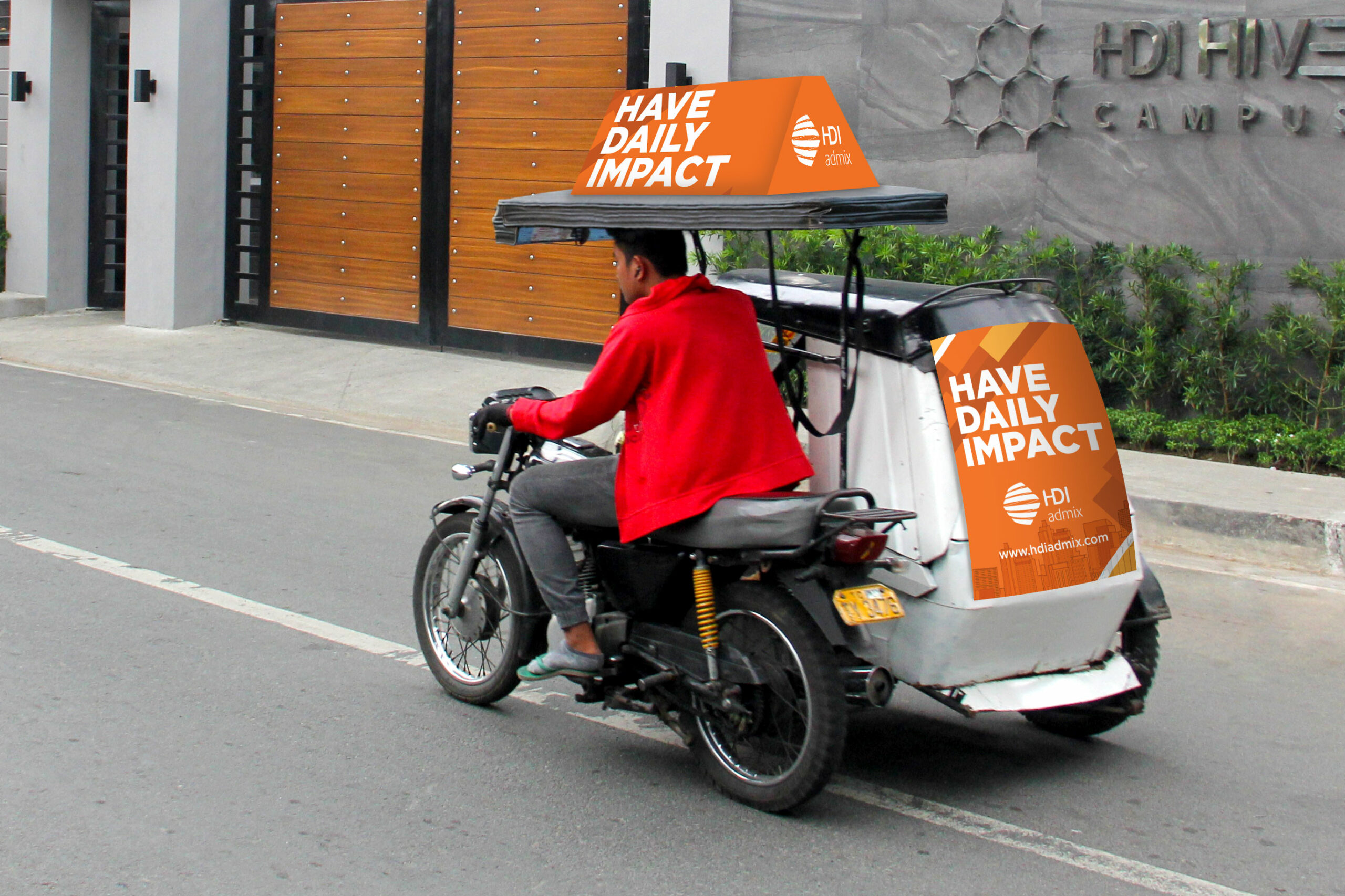Boost Your Service with Transit Advertising Philippines
Boost Your Service with Transit Advertising Philippines
Blog Article
Comprehending the Function of Transportation Advertising in Enhancing Brand Exposure and Customer Engagement
Transit advertising has actually emerged as a crucial aspect in the marketing landscape, offering special opportunities for brand names to boost their presence and engage consumers successfully. With the capacity to reach a captive and varied target market during their daily commutes, these advertising and marketing techniques are not simply concerning exposure; they are regarding producing meaningful links with possible consumers. As we explore the multifaceted advantages and innovative techniques within transportation advertising, it becomes necessary to take into consideration exactly how these components collectively affect customer understanding and habits, increasing concerns about their long-lasting influence on brand loyalty.
Meaning of Transit Advertising
Transit marketing describes the method of promoting items, solutions, or brands via ads put around mass transit systems. This type of advertising and marketing encompasses a range of positionings, including posters on trains and buses, digital displays at transportation stations, and covers on the exterior of cars. It intends to get to a varied audience, profiting from the high foot website traffic related to public transportation.
Transit marketing is purposefully placed to capture the focus of commuters, who typically invest substantial time waiting or taking a trip. By incorporating advertisements right into the day-to-day routines of people, brand names can develop a long-term perception and foster brand name acknowledgment. The tool is specifically efficient in metropolitan atmospheres, where public transport is a main setting of traveling.
In addition, transportation marketing can assist in local targeting, permitting organizations to get to details demographics based upon transportation routes and station areas. As city populations grow and using public transportation boosts, this advertising and marketing method has gotten prestige as an essential part of integrated advertising methods. The dynamic nature of transportation advertising, integrated with its ability to engage customers in a captive environment, highlights its significance in contemporary advertising and marketing techniques.
Benefits of Transit Advertising
The efficiency of transit advertising depends on its ability to deliver a wide range of benefits to brands looking for to boost exposure and interaction. One of the key advantages is the comprehensive reach it supplies; transportation ads can efficiently target varied demographics across city locations, getting to both travelers and pedestrians alike. This broad exposure substantially enhances brand name awareness.
One more advantage is the high regularity of impressions. As transit vehicles take a trip along well established paths and quit at several places, they produce repetitive direct exposure that reinforces brand messages. This regularity fosters knowledge, which is important in consumer decision-making.
Transit advertising and marketing is additionally affordable compared to various other media platforms. Given its large reach and capacity for high perceptions, brands often experience a lower expense per thousand perceptions (CPM), optimizing their advertising budget plan.
Additionally, transit ads can develop a sense of area link. By straightening with neighborhood transit systems, brand names can resonate with local audiences and promote a sense of regional pride. This local technique improves brand loyalty and interaction, making transit advertising a compelling option for services intending to solidify their visibility out there.

Effective Strategies for Transit Campaigns
To optimize the impact of transit campaigns, brand names should leverage critical preparation and implementation review customized to their target audience. First, recognizing the market attributes of the audience making use of public transit is essential. This enables brands to develop customized messaging that reverberates with prospective consumers.
Following, picking the appropriate transit mediums is vital. Whether using bus covers, train posters, or digital displays, each tool has distinct advantages that can boost presence. For circumstances, lively visuals on bus wraps can stand out, while electronic ads can be upgraded regularly to mirror timely promos.
In addition, incorporating a cohesive branding technique throughout transportation platforms guarantees uniformity and strengthens the brand name's identification. Using memorable taglines and attractive styles will certainly strengthen brand recall amongst commuters.
Last but not least, timing is an essential consider carrying out effective transportation campaigns. Releasing campaigns throughout optimal travel hours or neighborhood occasions can substantially raise exposure and engagement. By utilizing these techniques, brand names can successfully harness the potential of transit advertising, promoting higher awareness and link with their target market. Ultimately, a well-executed transit campaign can drive significant development in brand exposure and customer interaction.

Determining Effect and Involvement
In examining the effectiveness of transportation ad campaign, accurate dimension of impact and engagement is vital for brands seeking to maximize their advertising strategies. Metrics such as reach, regularity, and impacts give fundamental data to assess exposure. Analyzing these factors helps figure out exactly how several prospective consumers are exposed to the advertisements during their daily commutes.
Engagement can be additional determined via consumer interactions, such as site web traffic, social networks points out, and straight reactions to calls-to-action featured in the advertisements. Using devices like QR codes or unique Links can facilitate monitoring of customer actions straight linked to transit projects. Studies and responses mechanisms also function as beneficial techniques to gather qualitative data on customer understandings and recall of the ad.
Moreover, progressed analytics and acknowledgment models can correlate transit direct exposure with subsequent acquiring habits, offering insights right into the roi. By employing an extensive approach that integrates qualitative and measurable actions, brand names can create a nuanced understanding of their transit advertising impact. Ultimately, this data-driven method makes it possible for brands to refine their campaigns, guaranteeing they reverberate efficiently with target market and enhance general brand exposure.
Study of Successful Campaigns
Successful transit marketing campaign act as engaging instances of just how effective techniques can elevate brand name exposure and involvement. Transit Advertising Philippines. One noteworthy case is the "I Love New York" campaign, which changed the city's photo and attracted countless travelers. By making use of metro ads, billboards, and bus covers, the project developed a strong, cohesive brand name identification, leading to a significant uptick in tourist and local company patronage
An additional excellent campaign is Coca-Cola's "Share a Coke" effort, which leveraged transit marketing to individualize the brand name experience. By including prominent names on marketing materials throughout different transportation platforms, Coca-Cola promoted a much deeper emotional link with customers, motivating them to share their experiences on social networks.
Additionally, the "Got Milk?" campaign effectively made use of public transport ads to get to a wide target market, reinforcing the message of the relevance of milk in a well balanced diet plan. The project saw a measurable rise in milk intake in target demographics.
These study highlight that when performed attentively, transportation advertising additional resources can significantly enhance brand presence, foster customer engagement, and drive measurable outcomes, showing its vital duty in contemporary advertising approaches. - Transit Advertising Philippines
Final Thought
To conclude, transit advertising functions as a check over here crucial device for improving brand visibility and promoting consumer engagement. By utilizing strategically positioned promotions within public transport systems, brand names can efficiently enhance and get to varied target markets recognition through consistent direct exposure. The execution of targeted messaging and cutting-edge strategies additionally intensifies the influence of transit projects. Eventually, the capacity to measure interaction and assess effective study highlights the effectiveness of transit advertising in driving brand loyalty and customer interactions.
Transit marketing has emerged as a crucial aspect in the advertising landscape, offering one-of-a-kind chances for brands to elevate their exposure and involve consumers efficiently.In addition, transportation advertising and marketing can promote local targeting, permitting companies to reach particular demographics based on transportation routes and station locations.In assessing the efficiency of transportation advertising and marketing projects, accurate measurement of effect and engagement is vital for brand names looking for to optimize their advertising and marketing techniques.Successful transportation marketing campaigns offer as compelling examples of how effective approaches can elevate brand name visibility and interaction.In final thought, transit advertising serves as an important tool for boosting brand name visibility and promoting customer engagement.
Report this page